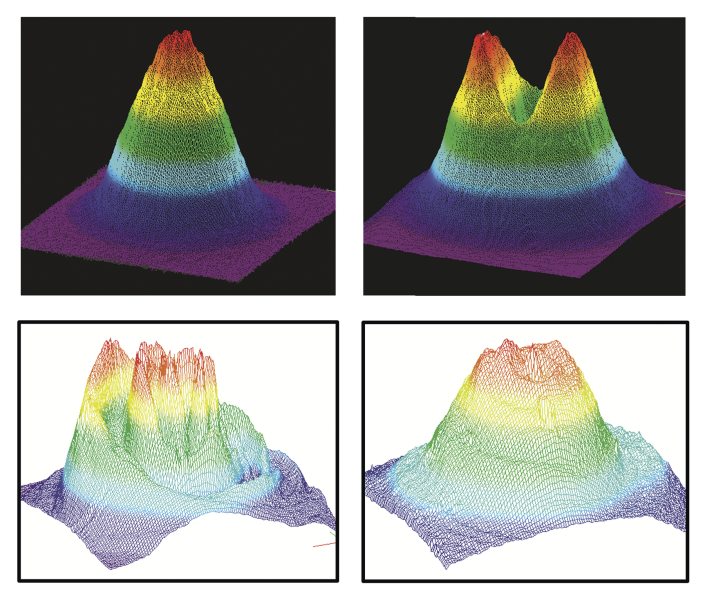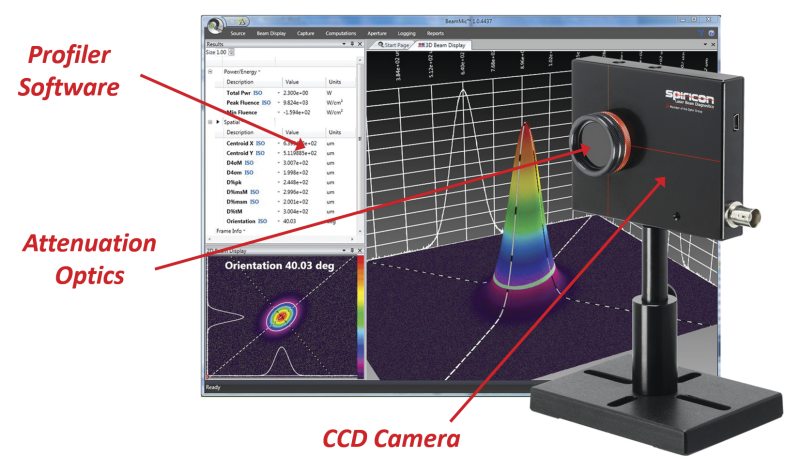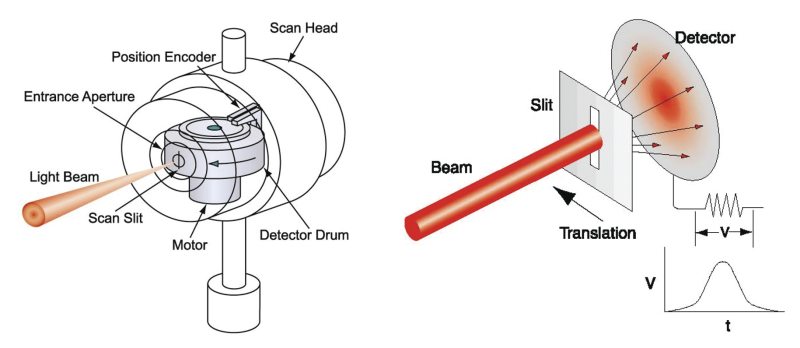While the individual photodiodes that make up most cameras have very large dynamic ranges (see
Photodiode Sensor Physics), this is reduced considerably for array detectors mainly due to the signal handling and readout. As a result, detector saturation occurs at much lower incident irradiances, and attenuation optics are often placed in the beam path prior to the detector. Beam profiling software, coupled to the camera, typically provides both image processing and data analysis capabilities. Image processing can include proper baselining, which helps eliminate background noise, electronic gain adjustment to maximize the dynamic range of the detector, and averaging, which can reduce noise. Data analysis should provide information on beam size, position, ellipticity (or deviation from a circularly symmetric beam), and real-time statistics of these values while also allowing for fitting of the beam profile to a Gaussian function. The benefit of a camera-based system is that the beam can be imaged directly and in real time to reveal not only the size and position of the beam but the distribution of the power/energy in the beam.
Figure 3 shows a
scanning slit beam profiler in which a narrow slit moves through the beam and the light passing through the slit generates current in a single photodetector. Thus, as the slit scans through the beam, the detector signal is linearly proportional to the spatial beam irradiance profile integrated along the slit. A digital encoder provides accurate slit position. The photo-induced signal is digitized and analyzed to obtain the beam profile in the direction of translation of the slit. Typically, two orthogonal slits are sequentially moved through the beam providing profiles in these perpendicular directions. From these profiles, important spatial information such as beam width, beam position, beam quality, and other characteristics are determined.
A scanning profiler has several advantages over a camera profiler. Since only a single photodetector is employed, sensors with very different spectral sensitivities can be used, enabling profiling from UV to IR. A single detector also has a larger dynamic range compared to an array. Since the slit only allows a fraction of the beam to impinge on the detector, much higher powers can be measured without requiring additional attenuation. Because the slit plane is the measurement plane, it is also possible to measure the tightly focused beams with small spot sizes that cannot be directly measured with a camera. However, the scanning slit profiler only provides measurements along two orthogonal directions of a beam and therefore lacks the two-dimensional information available from a camera. Additionally, because the signal from the slit is integrated in one spatial dimension, the device is most appropriate for Gaussian-like laser beams. Due to the speed associated with the mechanical movement of the slit, the profiler can only measure CW and relatively high frequency pulsed beams. Beams with low pulse repetition rates, < 1 kHz, should be measured with a camera.
 Over 8,000 products in-stock! & FREE 2-Day shipping on all web orders!* Learn More FREE T-Shirt with orders $250+ Details
Over 8,000 products in-stock! & FREE 2-Day shipping on all web orders!* Learn More FREE T-Shirt with orders $250+ Details



 Ultra-High Velocity
Ultra-High Velocity